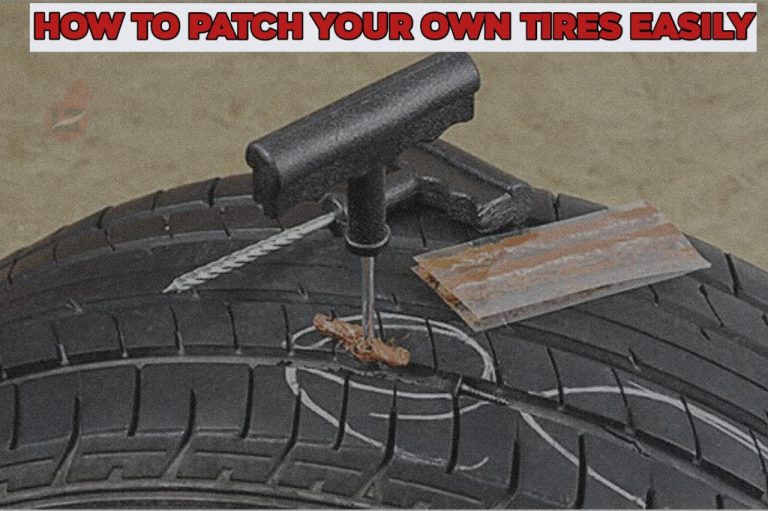In this article, I’ll show you the most efficient way to Patch your car tires at home.
Driving your car tires over a hazardous road path could result in air leaks, which can only be resolved by patching. While a self-patch isn’t recommended, there are times when they’re the only option, especially when you aren’t buoyant enough to seek the service of a tire repair shop.
Before we discuss how to Patch your Tires Easily, I’ll inform you that there are different types of tire repairs, and they all close punctures differently.
We have permanent, safe, temporary plug, patch, and safe tire repairs. The most efficient is the combination of the patch and plug repair. The plug and Patch repairs use the one-piece patch equipped with the repair stem and cap combo.
All you need to do is attach the plug/Patch to the open patch, then seal it by applying vulcanized fluids. This will help the patch stick to the tire, form an airtight connection with the base, and retain air and moisture in the tire.
There are also other temporary patching techniques, such as the plug/string or patch-only repairs that tire repair shops use that keep you coming back in no time.
Without wasting much time, let’s show you how to patch your tires with other procedures that tire shops use in patching tires.
How to Patch Your Tires
The easiest and most efficient way to Patch your tire is with the patch/plug method. It helps to seal the puncture area on the tire completely.
The procedure below might look simple but tedious and require your attention, especially as a first-time do-it-yourself task.
Also, ensure you’ve all the tools to avoid disruption during tire patching; they’re available on Amazon.
- Use a car jack to lift the wheel assembly and lose the bolt that holds the tires.
- Detach the tires from the wheel for proper inspection
- Next, remove the rim using a pry bar and a screwdriver
- Remove the tubes inside of the tires to aid proper inspection
- Now, visually inspect the tires and tubes for any leaks( you can pump air to detect the exact puncture spot)
- Once a puncture has been located on the tire, use a carbide cutter to prepare the surface of the rubber by getting rid of damaged cords and belts.
- Proceed to clean and roughen the puncture spot to aid in the adhesion of the patch/plug repair.
- Next, apply the vulcanized fluids to the punctured spot on the inner tube and leave it to dry for approximately 10 minutes.
- Now, insert the one or two patch repairs into the punctured area of the inner linen and use a tire stitcher to eliminate trapped air.
- You can now apply a rubber sealant on the rough surface of the tube to prevent damages that might arise from excess repairs.
- You can insert the tube back into the tires and then mount your tires to your rims.
- You can now inflate the tire and attach it to your wheel.
That’s it.
Temporary DIY Tire Patching Techniques
Application of Plugs and Strings on tires
Emergency roadside tire repair shops often use plug-and-string repairs. It inserts plugs and strings into the punctured spot to hold air.
While efficient, it could also be disastrous because the plugs and string will weaken over time and allow air to leak into the tube.
This can also result in a tire blowout if enough pressure is placed on the tire due to heat impact.
Application of only Patches on Tires
Most tire repair shops apply patches over a punctured surface without completely sealing it.
While this will prevent air and moisture from getting into the tire, heat will weaken the patch over time, resulting in air leakage.
A patched tire could also expand the puncture to other parts of the tube, especially when enough pressure is applied, thereby damaging the tire.
FAQs
However, factors such as tire age and road hazard could deprecate the lifespan of the tires.
As an Amazon Service LLC Program Associate, V. Auto Basics earns from qualifying purchases. See Our Affiliate disclaimer.
